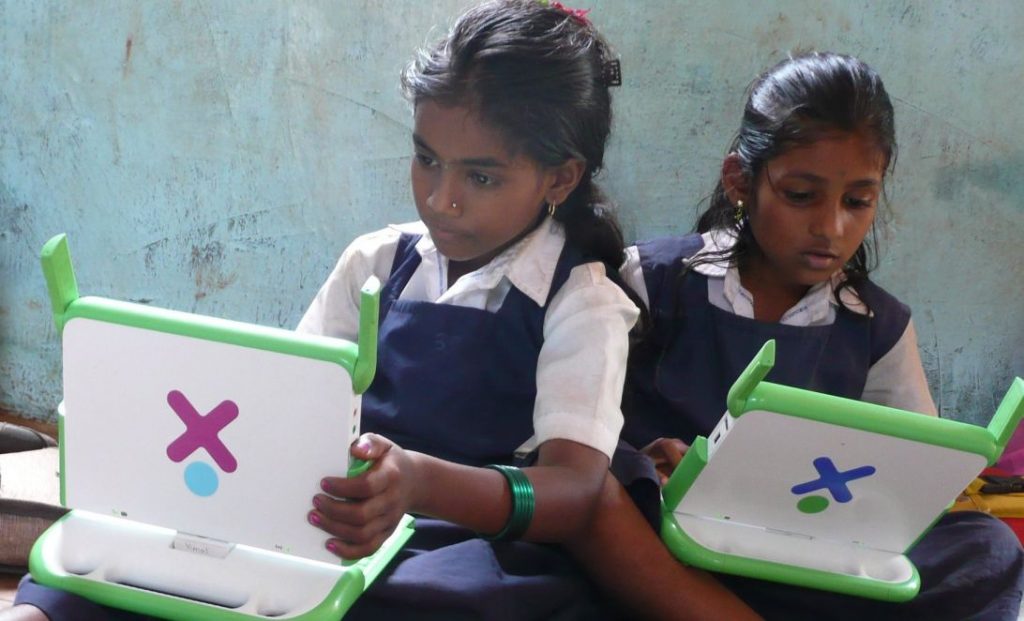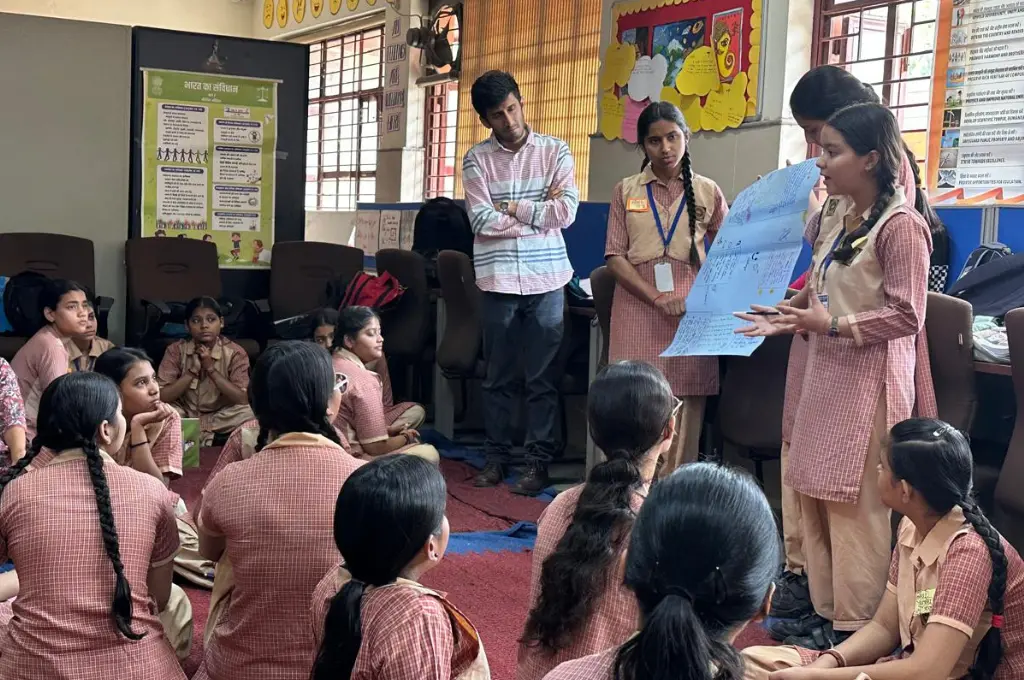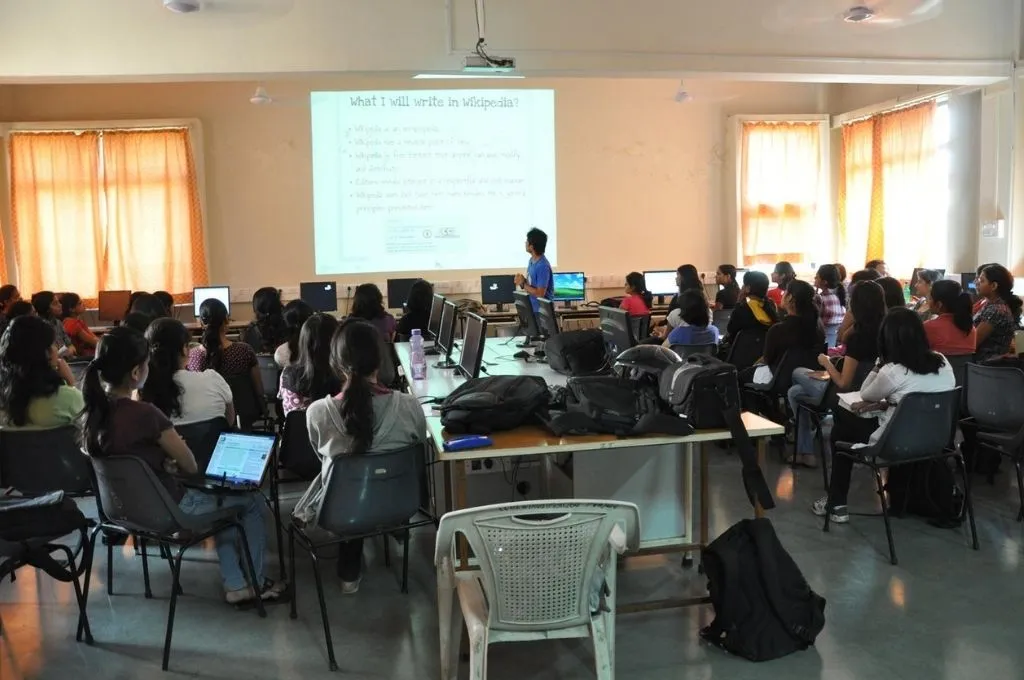The onset of the COVID-19 pandemic disrupted regular life in many ways. As in-person interactions came to a halt, entire offices shifted online. Those who had a roof over their heads and access to jobs and technology started working from home. The pandemic also changed the course of education, forcing a shift in the instructor-to-student interaction from within physical structures to virtual classrooms. Since this transition there has been endless debate on the deepening digital divide, and the psychological and sociological aspects of online learning. However, the quality of the current models for integration of technology in education remains untested.
Learning in a classroom is the outcome of a teacher’s understanding of the theory of learning—how students receive, process, and retain knowledge—and the very act of teaching, also referred to as pedagogy. Traditional classroom teaching and assessment is based on various pedagogical models, which are implemented by the education authorities after adequate deliberation and evaluation.
Online learning, on the other hand, is a relatively new method of learning, one that has become integral to education today as schools and universities shut down in the wake of the COVID-19 pandemic. At present, there isn’t sufficient research and evidence on the efficacy of systems for online instruction. The consequences of this on learning outcomes can be disastrous in the long run.
For instance, a simple curriculum framework for evaluation of secondary students by the Central Board of Senior Secondary Education in India can take up to five years of discussion by multiple experts in the field, detailed research references, and submission of voluminous reports before it is even considered for implementation. Currently, no such process is followed for online deployment of education.
Lessons from online education in the USA
Many countries like the USA have a more mature approach to online learning, and towards enabling policy to support it. For instance, the Department of Education, USA, has an educational technology (EdTech) policy that is updated periodically and community implementation guidelines. These national standards cover six broad topics: course content, instructional design, student assessment, technology, course evaluation and management, and 21st-century skills.
The department also produced a report that reviewed and analysed various evidence-based practices in online learning. Here are some key insights from the report:
- Elements such as video and online quizzes do not appear to influence the amount that students learn in online classes. The practice of providing online quizzes does not seem to be more effective than other tactics such as assigning homework.
- Online learning can be enhanced by giving learners control of their interactions with media and prompting learner reflection.
- As a stand-alone instruction medium, online learning can be considered as effective as conventional classroom instruction, but not more so.
- Although standards for online course and programme effectiveness have been identified, data-driven yardsticks for measuring against those standards are not generally agreed upon or in use.
Apart from the USA, the UK and Nordic countries also have well-structured policies for online learning.

Online education in India
In India the pandemic has accelerated the roll-out of online education. The number of EdTech platforms has also been growing at a rapid pace. According to a report by RedSeer and Omidyar Network India, the online education market for grades 1–12 is projected to increase 6.3 times in the next one year and create a USD 1.7 billion market.
EdTech players have aggressively captured the market, but there is no real third-party validation of the effectiveness of their approaches.
However, inequity and the lack of basic infrastructure and access remain causes for major concern. According to the 2020 Remote Learning Reachability report issued by UNICEF, only 24 percent of Indian households had internet connections to access e-education. Furthermore, the current application of online learning in India posits a range of other challenges. These include:
1. Lack of policy interventions and guidelines
Since the early 1990s, certain models have been proposed by researchers for e-learning and online learning.1 However, when an online platform is built, developers do not mention or publish the models that they have incorporated in its design, or indicate if any model has even been considered. It is very difficult for an educationist to validate the design as there are no statutory mandates or guidelines. A few education departments have information and communication (ICT) guidelines which cover the hardware and software equipment required for implementation, but almost none address the qualitative aspects of online education.
2. Insufficient research
There is no significant body of validated research by the government, academicians, or private sector in pedagogical aspects of online learning. A search on the pedagogical and qualitative aspects of most online platforms provides only basic anecdotal information about the number of users and growth. The DIKSHA platform, launched in 2017 in India and now managed by the National Council of Educational Research and Training (NCERT), is a content-hosting repository with impressive usage in the last year due to the pandemic, but there is not sufficient analysis about the quality of its content.
3. No checks in place
Owing to the pandemic, EdTech players have aggressively captured the market, but there is no real third-party validation of the effectiveness of their approaches or methodologies. Take, for example, WhatsApp-based teaching and assessment, which is being provided by a large number of organisations. There are no guidelines on how the content should be structured, consumed, evaluated, and analysed by students and teachers. Often the decisions on design approach are taken by software engineers who focus on implementation effectiveness rather than the pedagogical significance of the approach.
4. Rigid structures that impede adaptability and innovation
Online education software is primarily driven by proprietary architecture—owned and controlled by a particular entity—which makes customisation difficult as technology improves. In an ideal scenario, the systems would have open-source architecture, like DIKSHA, so that any changes in technology can easily be incorporated by other players working in the field. Learning management systems (LMS) built on rigid structures are finding it difficult to adapt to emerging technologies.
5. Lack of transparency
In the pre-pandemic era, most online solutions were targeted at students and professionals appearing for competitive exams or pursuing higher education. The requirements, approach, and motivation of students focusing on competitive exams is different from those taking regular classes. However, the very same platforms are now being used for students’ basic education. There is no reported assessment available publicly on how the adult learning (andrology) approach was modified for child learning (pedagogy) on any platform.
The approach in India seems to be as Dr Robert Pianta, dean of the University of Virginia, described the state of efficacy research in EdTech in the USA, “At best, we’re throwing spaghetti against the wall and hoping that it sticks. Except that we don’t even know what it means to stick.”
Measuring quality
Quality outcomes in online learning are a challenge for both pedagogy and technology. However, there has been significant interest among educational researchers to define quality in tech-based education for the last two decades. Kimmons and Hall have proposed six criteria for determining quality of education technology integration in a model: clarity, compatibility, student focus, fruitfulness, technology role, and scope.
In a country like India where infrastructure and access are a challenge, every online learning model should be designed with options of simple lightweight learning modules, which can be upgraded to advanced versions as local infrastructure improves.
Way forward: Learnability by design
In the post-pandemic world, online learning will continue to play a significant role in the road map of learning. Over the last two decades it has been conclusively proven that online learning can be as effective as classroom learning when designed properly. Blended learning too has shown better outcomes than classroom learning in many evaluations. The National Education Policy (NEP) 2020 also advocates a blended learning route for the future.
A primary concern in this burgeoning EdTech space—apart from the absent policy framework—is the lack of data-driven standards of measurement.
The study of vocational and STEM subjects, for instance, calls for lab-based and hands-on activities. While some of these may be difficult to replicate online, a significant part of them can be delivered virtually with proper design. The report published by the Department of Education, USA, offers enough evidence on the many components of such training that are more impactful when taught in a blended learning mode than only in-person classroom teaching.
Recently, the Ministry of Education proposed the National Education Digital Architecture (NDEAR) with a vision to create a national digital infrastructure that energises and catalyses the education ecosystem. NDEAR provides common building blocks in a federated manner that can be used by stakeholders for the creation of new tools and solutions for the education system. This is a welcome step that aligns with the goal of the NEP. However, this is more of a technical blueprint, and the pedagogical aspects of EdTech are still not a part of the conversation.
A primary concern in this burgeoning EdTech space—apart from the absent policy framework—is the lack of data-driven standards of measurement. It is incumbent on all the stakeholders of education that any learning model developed be designed with reference to an underlying pedagogical model and standards of measurement. While this may not resolve all the problems, it will provide a good benchmark for educators to conduct a reasonable evaluation of the online platform and modify it to the emerging guidelines.
—
Footnotes:
- Some models for online learning are TPACK (Koehler and Mishra, 2009); SAMR (Puentedura, 2003); TIM (Hermes); PICRAT (Kimmons, Graham, and West).
—
Know more
- Read this article to understand strengths and weakness of online learning from the point of view of educators.
- Learn how China was able to successfully leverage technology and continue education during the pandemic.
- Read this comprehensive guide on how online education can be designed to deliver effective online instruction





